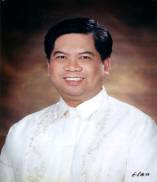NOTES:
Southeast Asia '08: International Joint Research and Training Program in High-Performance Computing Applications and Networking Technology
4th PRAGMA Institute
Pacific Rim Applications and PRAGMA Institute
December 1-5, 2008
NCHC, Taiwan
PRAGMA =
A Practical Collaborative Framework
streaming underwater video
bridging grid islands
integrating SCMS web and Condor
- PRAGMA CA and VOMS
MURPA
Working Groups: Organize Activities
Resources
Biosciences
Telescience
GEO
Framework for Collaboration
Resources: Activ middleware improvement and exchange
Biosciences: Avian Flu Grid
Telescience: Global Lake Ecological Observatory Network (GLEON); CREON
Telescience and GEO
Education: PRIME; PRIUS; MURPA; use of HD VTC
Training: PRAGMA Institutes
From PRAGMA to CEPERC: An Opportunity from Success to Excellence
Continuous Evolvement of Community Building
Pacific Rim 32 Institute Members
KEYNOTE TALK:
“New Frontiers in Science and Education:
Cyber-Enabled Environment''
William Y. B.Cheng, PhD
Program Director
Office of International Science and Engineering
and Office of Cyberinfrastructure
National Science Foundation
GLORIAD
Global-Ring Network for Advanced
VO: International R&E Network
Vision: People anywhere can do research
LOOKING (Laboratory of Ocean ..)
Work with science teams to advance
Integrated Cyberinfrastructure
Layers:
Global Collaboration
Grid Middleware
Cybersecurity
Infrastructure
Globus org Downloads
Nov 2006
UCSD Osaka University Collaboration
Global LakeEcological Observation
Avian Bird Flu in Qinghhai Lake, Qinghai Province, May 2005
Taiwan National Grid
Earthquake Engineering Grid
Flood MitigationGrid
Water Resource Agnecy
Real-Time Video Monitoring River and Reservoir Stage
24 hours a day~200 sites
Influence of Resetting Events for Lake Metabolism
A Near Future 3D Stereo Fiber-Optic Eneabled Ocean Observatory
Coral Reef Environmental Obervatory Network (CREON)
GBR, UCSB
ReefBot is a mobile sensor nerok
Digital Reef Mapping
POWER OF CEYBERLEARNING
Bringing people, information, togethere in the samepalce at the same time
PRIME Students
Global Cyberbridge
University of Sao Paulo's School of the Future (Brazil)
Knowledge triangle
education, research, innovation
Cyber-Eucation: PostDoc, Visit Master Courses
NSC Southeast Asia Program
Globalization:
Two New Developments
Information Technology
The World is Flat
distance is not an issue anymore
Global Knowledge Economy
More closely integrated global economy
Competition for Global Resources and Talent
New Knowledge Economy
Increase R&D Investment
Education
Infrastructure
Note: Every 7 to 10 years, new directions come in (e.g., MP3)
Equation for prosperity
Talent + Education
New discoveries
Innovation + new products and services
High quality jobs + greater productivity
Sustained Growth
Sustained economic growth depends on Science and Technology
-----------------
Talk: Using Technology to Preserve Cultural Heritage
cisa3.cali2.net
Center of Interdisciplinary Science for Arts, Architecture and Archaeology
3D Modelling with Structured Light
.












